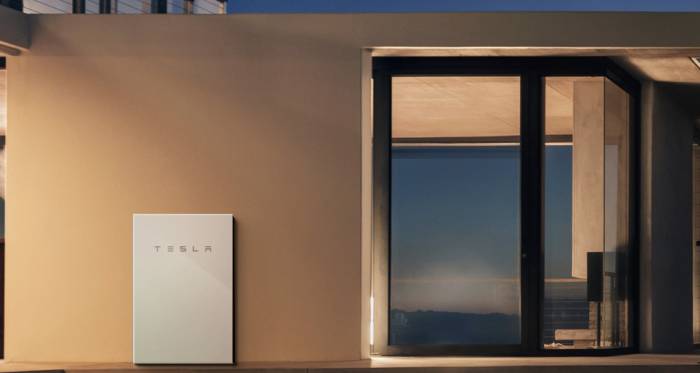
Image: Tesla (Powerwall 2)
Late last year, Australia was experiencing somewhat of a frenzy of interest in solar + battery storage. How has that panned out?
The following figures, sourced from Australia’s Clean Energy Regulator, indicate the number of concurrent small-scale solar and battery installations (all brands) over the past few years. Here’s how the numbers look since 2014, nationally:
- 2014: 693
- 2015: 537
- 2016: 1,563
- 2017: 3,147
- Total : 5,940
The figures for 2017 were current as at the end of November and are also not final for another reason. When eligible solar power systems are installed, they quality for Small-scale Technology Certificates (STCs) that form the basis of Australia’s “solar rebate“. STCs can be created up to 12 months after installation, so the 2017 figure will rise, as could 2016’s ( but to a lesser degree).
Solar battery systems on their own aren’t eligible for STCs, which is what the Regulator bases its numbers on, so the figures also don’t include energy storage added to existing solar power systems.
As for the total concurrent solar + battery system installations that have occurred in individual states and territories to November 30, 2017 since 2014:
- Australian Capital Territory: 260
- New South Wales: 2,383
- Northern Territory: 19
- Queensland: 1,181
- South Australia: 556
- Tasmania: 95
- Victoria: 1,019
- Western Australia: 427
What Does 2018 Hold For Solar + Battery Storage?
Professor Ray Wills, who heads Sun Brilliance, has made a bold prediction for next year.
“At the distributed level, Wills is confident that the payback for solar and batteries combined will mean new installs will start to outstrip solar-only installations over the course of 2018 – and into 2019 no-one will install solar without a battery,” reported RenewEconomy last week.
It’s important to note the reference to blended payback – on the issue of battery payback specifically, SQ blogger Ronald recently opined:
“Battery prices continue to fall and so 2018 could be the year home batteries finally pay for themselves. But I doubt it.”
November statistics from the Clean Energy Regulator indicated there were 164 small-scale solar power systems with a concurrent battery storage installation during the month, representing just 3% of overall PV installations during November.
If Professor Wills’ prediction becomes reality, then 2018 could be huge for Australian residential energy storage – assuming the wheels don’t fall off solar energy uptake and battery system supply issues are addressed.

 RSS - Posts
RSS - Posts



Funny enough that cheap home battery storage may make roof solar a waste of money. With sufficiently big battery to cover whole day consumption, cost of energy during the day is equal to lowest cost of grid power during night. So roof solar electricity now compete against cheap “night” rate intead shoulder/peak rates. At current power prices solar will never pay for itself at night rates. In other hand, roof solar reduces size of battery with required to cover peak/shoulder time by providing some/all energy during the day.
So evaluate best strategy we need to know, what is cheaper, roof solar or additional battery capacity. Unfortunately it is really hard to calculate how much battery capacity roof solar saves. It depends on power usage profile.